In today’s dynamic world of personal transportation, electric scooters have become a staple, blending eco-friendliness with convenience. But let’s face it – forgetting or misplacing the charger can be a real hassle, leaving you searching for answers on how to charge electric scooter without charger.
In this guide, we’ll dive into creative solutions to keep your electric scooter charged, even when you don’t have the standard charger handy. Whether you’re at the office, on vacation, or dealing with a power outage, these tips will ensure you’re always ready to ride and never left stranded.
Why Charge Electric Scooter without Charger
Before we dive into the different methods of charging an electric scooter without a charger, let’s understand why it’s important to have alternative ways to charge your scooter. Knowing how to charge an electric scooter without a charger can be a lifesaver when you forget or misplace the original charger.
Even the most organized among us can overlook the charger at times, and having these alternative methods can save you from a lot of hassle and inconvenience.
The Importance of Alternative Charging Methods
Additionally, having alternative charging methods ensures that you can use your electric scooter even in situations where there is no access to a traditional power outlet. This could be while camping, on a road trip, or during a power outage.
Cost Savings with Alternative Methods
Moreover, using alternative charging methods can also save you money in the long run. Traditional chargers can be expensive to replace, and with alternative methods, you won’t have to worry about constantly buying new chargers.
Let’s explore some of the ways to charge an electric scooter without a charger.
- Also Read: How to Charge Razor Scooter Without Charger
Method 1: Charging Your Electric Scooter with a Universal Charger
A universal charger can be a handy backup—just make sure you use it correctly to keep your scooter’s battery safe and healthy.
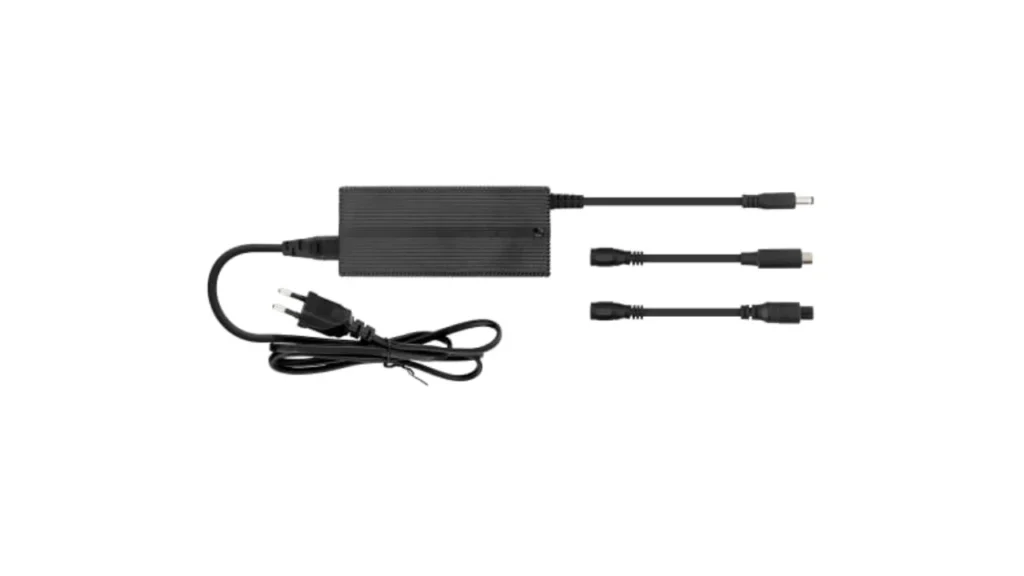
Check Your Charger’s Specs First
Before plugging anything in, double-check that your universal charger matches your scooter’s voltage. Using the wrong voltage can damage the battery, so always compare the charger’s output with your scooter’s requirements.
If the voltages do not match, don’t risk it—use a voltage converter instead. This handy device adjusts the charger’s output to fit your scooter’s needs, ensuring a smooth and safe charge.
How to Charge Your Scooter Step by Step
1. Plug in the Charger: Connect the universal charger to a working power outlet. Make sure the outlet is stable to avoid power fluctuations.
2. Attach to Your Scooter: Find your scooter’s charging port (usually on the deck or stem) and plug in the charger.
3. Let It Charge: Once connected, the charger or scooter should show a red light to indicate charging. When the battery is full, the light typically turns green.
4. Unplug Safely: Always unplug the charger from the scooter first, then from the wall. This helps prevent any electrical surges that could harm your scooter.
Follow these simple steps, and you will keep your e-scooter powered up—no original charger needed!
- Also Read: How to Fix Ninebot Scooter Charging Problems
Method 2: Charge Your E-Scooter with a Power Bank
A portable power bank lets you juice up your e-scooter anywhere—perfect for riders who need a quick boost on the go.
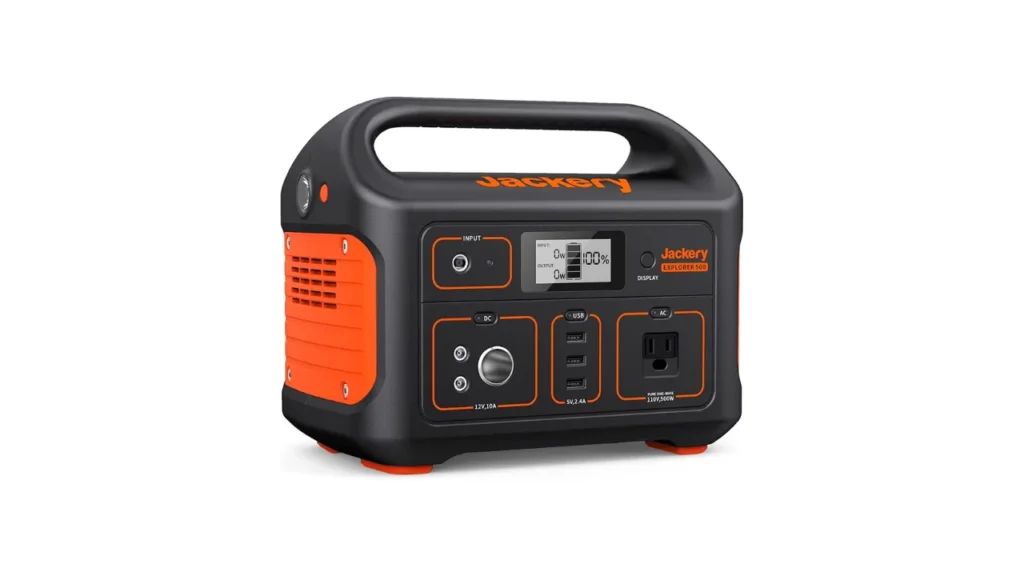
Picking the Right Power Bank
Not all power banks work for e-scooters. To get the best charge, keep these things in mind:
Capacity (mAh): The higher the mAh, the more charges your power bank can deliver before it needs a recharge. Check your scooter’s battery capacity and pick a power bank that can handle it.
Output Power (Watts): Want faster charging? Choose a power bank with high output power that matches your scooter’s input needs.
Making the Connection
If your scooter supports a power bank adapter (check your manual), charging is a breeze—just plug and go. If not, no worries! You can still charge it directly using the right cables or even connect straight to the battery if needed.
How to Charge with a Power Bank
Here are the easiest ways to power up your scooter:
1. Power Bank Adapter (Easiest Option)
– Some scooters have a special port for power bank adapters.
– Just plug in your power bank—it’s secure and hassle-free.
2. Direct Charging (Works for Most Scooters)
– Connect your power bank to the scooter’s charging port with a compatible cable.
– Simple, fast, and no extra adapters needed.
3. Direct-to-Battery Charging (For Advanced Users)
– If your battery is removable, you can connect the power bank directly to the battery terminals.
– Note: Only do this if you are comfortable handling battery connections.
With these options, you will never get stranded with a dead battery again! Just grab a power bank, pick your charging method, and keep rolling.
- Also Read: How To Charge Segway Ninebot Scooter
Method 3: Using Your Car Battery
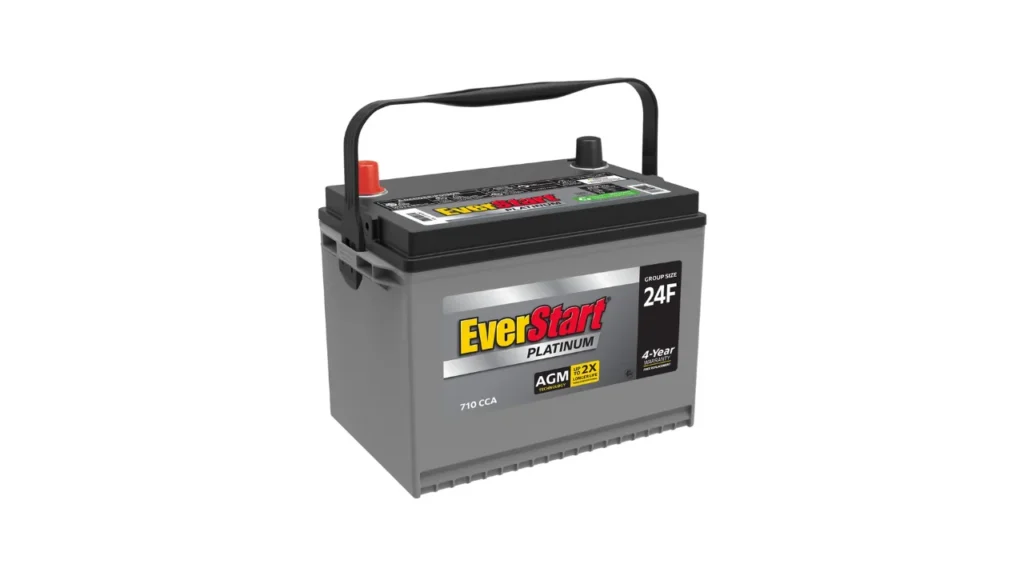
Power Basics You Need to Know
Here’s the deal: your e-scooter needs way more juice than a single car battery provides. While car batteries put out 12V, most scooters require 24V, 36V, or even 42V to charge properly.
You’ve got two options to bridge this gap:
1) Link multiple car batteries together (called “in series”), or
2) Use a special voltage booster
Gear Up Safely
Before you start, collect these essentials:
– Heavy-duty jumper cables (the kind with teeth/gator clips)
– Voltage regulator/booster (unless using multiple batteries)
– Your scooter’s original charger
– Multimeter (to check power levels)
– Protective gloves & glasses (safety first!)
Step 1: Set Up Your Power Source
– Turn your car completely OFF
– Locate the 12V battery (red terminal = positive, black = negative)
– Need more power? Connect additional batteries:
• Attach jumper cables from one battery’s positive to the next’s negative
• Repeat until you reach your needed voltage
Step 2: Make the Connection
If using a voltage regulator:
1. Clip jumper cables to car battery terminals
2. Connect other ends to regulator’s input
3. Plug your scooter charger into regulator’s output
4. Power on and verify voltage with multimeter
If using multiple batteries:
Simply connect your scooter charger to the final battery in the series
Step 3: Charge Smart
– Stay nearby and check progress every 15-20 minutes
– Use your multimeter to monitor the charge level
– Disconnect IMMEDIATELY when fully charged
– Shut everything down before removing cables
Important Note: This is strictly an emergency solution. Regular car battery charging can shorten your scooter battery’s lifespan. Use only when you’re really in a bind!
Bonus Safety Tip: Always disconnect in reverse order (scooter first, then batteries/regulator) to prevent power surges.
- Also Read: What is Guard Mode on Segway Ninebot
Method 4: Using a Laptop Charger (For Scooters Under 24V)
A laptop charger can work in a pinch—but safety comes first. Here’s a simple, step-by-step guide to doing it right.
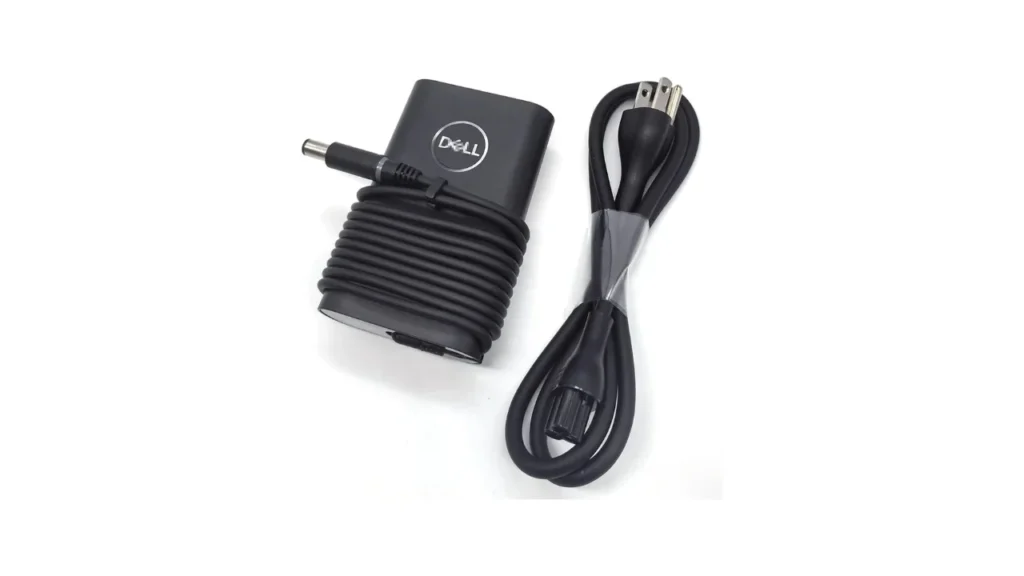
Check Your Laptop Charger’s Power Output
Not all laptop chargers are the same. Most supply between 15V and 20V, so you’ll need to make sure yours matches your scooter’s voltage needs.
For example, a MacBook charger delivers either 14.5V or 20.3V, which works for many scooters. Just double-check your scooter’s required voltage before plugging anything in.
Adjusting Voltage and Current (If Needed)
If your laptop charger’s output doesn’t perfectly match your scooter’s needs, don’t worry. A voltage and current regulator can help fine-tune the power flow, keeping your battery safe while it charges.
How to Charge Your Scooter Step by Step
1. Connect the Charger: Plug the charging cable into your scooter’s port. If it doesn’t fit, carefully attach the charger’s wires to the battery’s positive and negative terminals. Avoid straining or bending the wires.
2. Keep an Eye on the Battery: Watch the charge level closely. Once your scooter’s battery is full, unplug the charger right away to avoid overcharging.
3. Unplug and Store Safely: When charging is done, disconnect everything and store the charger in a dry, safe spot.
This method works as a temporary fix, but it’s always best to use the right charger for your scooter whenever possible. Stay safe and happy riding!
Method 5: Charge Your Scooter Using a Laptop or Car Port (For 12-24V Scooters)
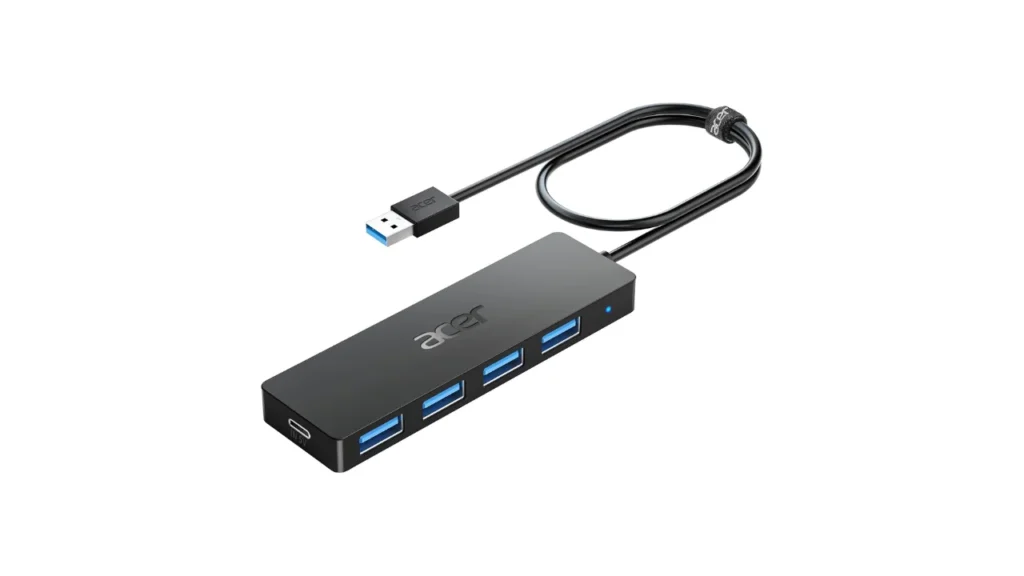
The USB Cable Hack
A simple USB cable might do the trick—but only if it matches your scooter’s power needs. Not all USB cables deliver the same voltage (V) and current (A), so check yours before connecting. Using the wrong one could mean slow charging or even battery damage.
Voltage Check: Don’t Skip This Step
For Cars: Most car power sockets (aka cigarette lighter ports) supply 12V, but this can vary depending on your vehicle. Always test the output first. Need more power? You can link two car batteries together in series for a higher voltage boost.
For Laptops: Many laptop chargers provide 12V—great if that’s what your scooter needs. If your scooter requires more, a voltage converter can step up the power safely.
How to Connect Everything
Step 1: Prep Your USB Cable
Most scooters don’t have USB ports, so you’ll need to modify a cable:
– Cut one end off and strip the wires inside.
– Red wire = Positive (+)
– Black wire = Negative (-)
(Ignore the white/green wires—they’re for data, not power.)
Step 2: Plug & Charge
– Laptop method: Connect the USB to your laptop and attach the red/black wires to your scooter’s charging port or battery terminals.
– Car method: Use a compatible adapter to plug into your car’s 12V socket, then connect to the scooter.
Pro Tip: If your scooter needs more than 12V, skip the laptop—use multiple car batteries instead for extra power.
Safety First: Add a Fuse
No built-in fuse in your scooter’s circuit? Add an inline fuse to your charging setup. It’s a simple way to prevent overloads or short circuits that could fry your battery.
This method works in a bind, but it’s a bit technical. Perfect for emergencies but stick to your regular charger when possible. Stay charged, stay safe!
- Also Read: Electric Scooter vs Electric Bike
Method 6: Free Charging While You Ride (Regenerative Braking Hack)
Your electric scooter might already have a hidden charging feature built right in! Many modern models use something called regenerative braking – basically, your scooter can recharge its own battery a bit every time you slow down. Here’s how to make the most of this free power boost:
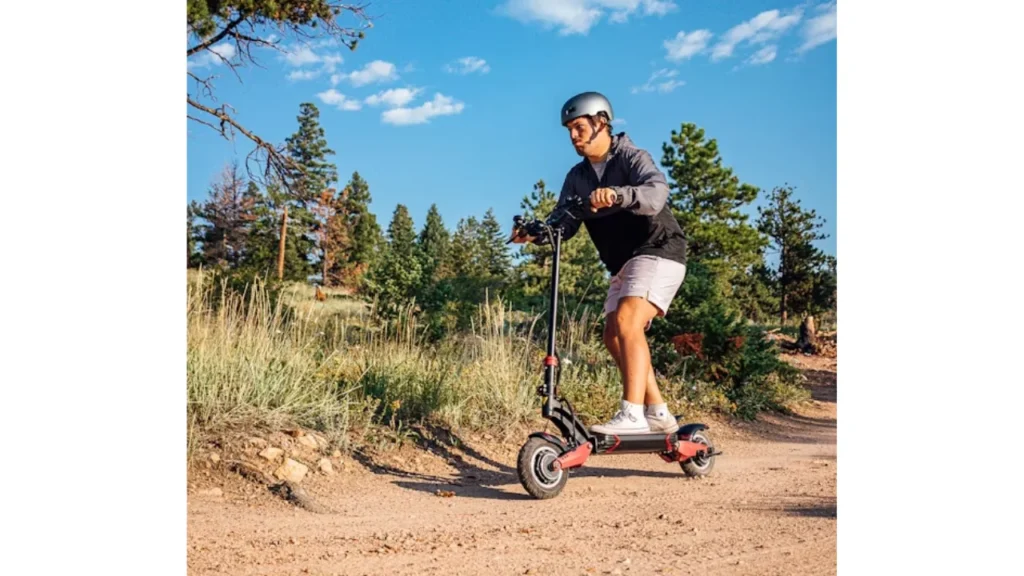
How it Works
When you hit the brakes, your scooter’s motor temporarily flips roles and becomes a mini generator. Instead of wasting the energy from slowing down, it converts that motion back into electricity to top up your battery. Think of it like recycling your momentum!
Pro Tips to Maximize Your Free Charge
1. Brake Like a Pro
– Ease off the throttle early when approaching stops
– Let regenerative braking do most of the slowing (you’ll feel it kick in)
– Avoid slamming on the brakes – smooth stops = more energy recaptured
2. Check Your Settings
Some scooters let you adjust braking intensity. If yours does:
– Choose the strongest setting that still feels safe
– Test different modes to see what gives the best recharge
3. Plan Your Stops
Look ahead and anticipate red lights or turns. The longer you can coast while regenerating, the more power you’ll recover.
Bonus: This isn’t just about charging – it helps your brake pads last longer too! While you won’t get a full charge from this alone, it’s a great way to squeeze extra miles from every ride.
Remember: Not all scooters have this feature, and results vary by model. But if yours does, you’re basically getting free power every time you slow down!
- Also Read: Segway Ninebot KickScooter Max G2 Review
Method 7: Eco-Charging – Power Your Scooter with Nature
The sun and wind can become your personal charging stations! Here’s how to harness nature’s power for your rides:
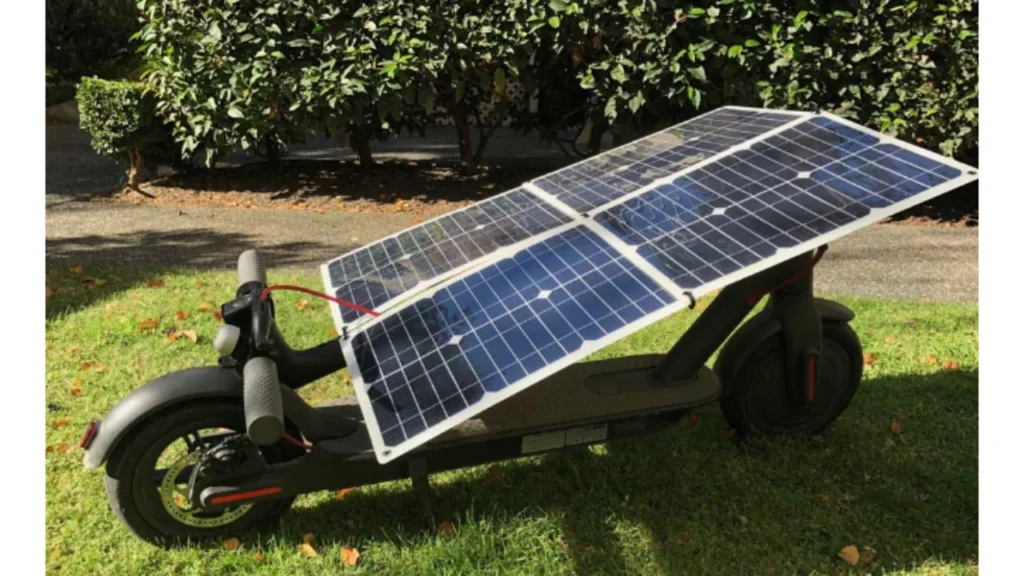
Your Green Charging Options
Solar Power Setup
– Grab portable solar panels (100W or more works best)
– Get a solar converter to change sunlight into scooter-friendly power
– Connect directly to your battery or use a solar-powered power bank
Wind Energy Alternative
– Small portable wind turbines can work in breezy areas
– Works best when combined with a battery storage system
– Great for cloudy days when solar isn’t optimal
Pro Tips for Nature-Powered Charging
1. Match Your Gear
– Check your scooter’s voltage needs first
– Bigger batteries need larger panels/turbines
2. Smart Charging
– Solar works best from 10AM-3PM
– Wind turbines need steady 10+ mph breezes
– Always use a charge controller to protect your battery
3. Portable Power Banks
– Solar-charging power banks let you store nature’s energy
– Charge the bank by day, then top up your scooter anytime
Bonus: Some new scooters come with built-in solar charging! While full charges take longer, you’ll love riding on pure sunshine.
Remember: This is the ultimate eco-friendly charging solution – perfect for camping trips, outdoor adventures, or just reducing your carbon footprint one ride at a time!
- Also Read: Best Electric Scooters for Heavy Adults
Method 8: The No-Stress Charging Solution
Out of juice? Don’t panic! Here are two easy ways to get back on the road:
Option 1: Borrow a Charger
Find a friend with a compatible charger. Check local scooter groups – riders often help each other out. Always verify the voltage matches your scooter first.
Option 2: Visit a Service Center
Most shops can charge your scooter while you wait. Great opportunity to ask about maintenance tips. Many centers sell replacement chargers if you need one.
The Best Long-Term Fix: Get Your Own Charger
Stop the scramble! Owning the right charger means:
- Always ready when you need it
- Perfect match for your scooter’s battery
- Much safer than makeshift solutions
Shopping Smart for a New Charger
1. Know Your Numbers
– Check your scooter manual for voltage requirements
– Take a photo of your charging port
2. Buy From the Best
– Stick to authorized dealers
– Look for safety certifications
3. Test It Out
– Try before you buy when possible
– Check return policies for online orders
Final Thoughts
Running out of battery doesn’t have to mean walking home! As we’ve explored, today’s scooter riders have more charging options than ever before – from high-tech solar solutions to simple borrowed chargers. Each method offers its own blend of convenience, speed, and reliability to match your specific needs.
Your Charging Toolkit at a Glance:
| Charging Method | Safety Rating | Cost Factor | Speed Rating | Best Used For |
| Universal Charger | ★★★★☆ | $$$ | ⚡⚡⚡⚡ | Everyday reliable charging |
| Power Bank | ★★★★☆ | $$$$ | ⚡⚡⚡⚡ | Riders who need mobile power |
| Car Battery Setup | ★★☆☆☆ | $ | ⚡⚡ | Emergency roadside charges |
| Laptop Charger Hack | ★★☆☆☆ | $$ | ⚡ | Tech-savvy temporary fix |
| Solar/Wind Charging | ★★★★☆ | $$$$ | ⚡⚡ | Eco-conscious adventurers |
| Service Station | ★★★☆☆ | $$-$$$ | ⚡⚡⚡⚡ | When you need professional help |
The Smart Rider’s Approach:
While these alternative methods can save the day, they work best when you:
– Always prioritize safety over convenience
– Match the method to your situation (emergency vs planned charge)
– Understand your scooter’s specific power requirements
– Consider investing in backup charging solutions for peace of mind
Now that you’re equipped with this complete charging playbook, you’ll never have to worry about being stranded again. Here’s to many more miles of emission-free, exhilarating rides. Charge on, scooter squad!
The road ahead is yours to explore – just make sure you’ve got the power to get there!